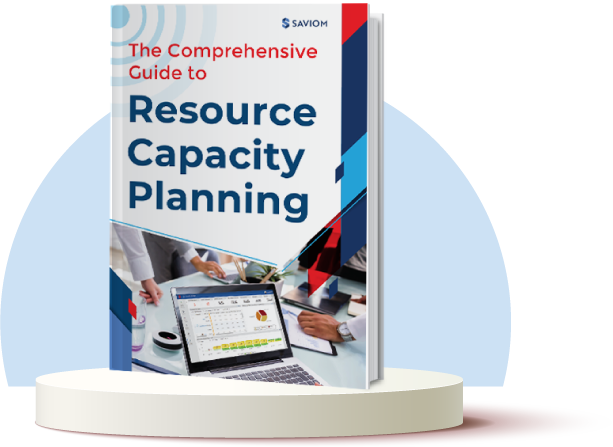Did you know that a construction project is different compared to other similar projects?
A construction project requires a diverse set of expertise, from on-site laborers and engineers to highly skilled architects and project managers. It is unique due to its vulnerability to climatic and environmental dependencies. It further adds to its complexity in addition to traditional resource-related challenges. When project managers fail to tackle them or slight deviation in any aspect is overlooked, it can lead to project failure.
In fact, according to the research by KPMG, Over 50% of engineering and construction professionals report one or more underperforming projects in a year.

The question is, what are the primary reasons behind the failure of a construction project?
This article addresses the same question and takes a deep dive into different ways to overcome obstacles and improve the probability of success.
But let’s first begin with the understanding of why construction projects are unique in their way. Hold tight!
How Are Construction Projects Unique?
Construction projects are one of a kind where each site is unique. The projects are always time-driven and cost-driven and involve a multitude of both human and non-human resources.
Resources involved in construction projects include;
- Human Resources: contractors or subcontractors, architects, engineers, suppliers, manufactures, workers, etc.
- Non-human Resources: solid materials, machinery, equipment, etc.
Before the project initiation, all the project’s necessary elements, like the scope, resources, potential risks, safety, and the environmental impact of the operations, are considered. The timelines of construction projects are also typically estimated in advance. Therefore, clients are required to prepare a design and budget at a very early stage.
In modern construction, introducing new materials, methods, and technologies for sustainable development can lead to a growing degree of risk and complexity. Therefore, the managers need to be innovative and have an appropriate project plan in place. Analyzing resource constraints and their interdependencies will also enable them to mitigate all task-related risks and improve chances for success.
The uniqueness of construction projects also addresses the external influences and changing requirements that can alter throughout the project timeline. These can include technological upgrades, financial restrictions, market volatility, climatic changes, and changing client requirements.
Now that we know the characteristics of a construction project, let’s understand the construction industry’s underlying issues that lead to project failure.
Read More: A Detailed Guide to Construction Management Plans
Causes of Construction Project Failure
A construction project can be led to failure for a vast number of reasons. Let’s take a glimpse at some of the most significant ones:
Lack of Project Leadership
The team is driven by a project leader who has the best expertise and sound decision-making skills. They ought to make the right decisions at the right time as poor choices will have extreme repercussions on the project’s progress. The lack of supervision by managers will also deteriorate the efficiency of the project, resulting in budget and schedule overruns. This will give rise to conflicts among team members and affecting various interdependent tasks and overall productivity.
Poor communication of managers with stakeholders and between cross-disciplinary teams may lead to a communication gap which further causes organizational chaos and low productivity.
Poor Project Planning
As rightly said by ‘Pablo Picasso’- “Our goals can only be reached through a vehicle of a plan, in which we must fervently believe, and upon which we must vigorously act. There is no other route to success.”
Insufficient preparation or an ill-defined WBS is one of the most prominent reasons construction projects spin out of control. Project planning includes defining management strategy, but the lack or insufficiency of efforts towards the below-mentioned factors leads to project failure.
- Project’s scope
- Project work breakdown structure (WBS)
- Task dependencies
- Project resource schedules
- Project risks (Financial/resource)
- Project procurement/delivery schedules
- Site surveys and logistics.
The use of conventional tools and silos of spreadsheets for project management often causes inconsistencies as updates are not available in real-time. Another issue is the alteration in scope or scope creep, which means that the scope has undergone changes in the scheduled plans. Miscalculations in work breakdown structure (WBS), and changing market conditions (e.g., cost of supplies and labor) contribute to a massive loss in business continuity for the organization.
Read More: What is Resource Planning, and Why is it Important in Project Management?
Inaccurate Resource Capacity Planning
A construction project requires a diverse set of human resources such as engineers, architects, site laborers, and other non-human resources like assets, machinery, and equipment. However, during task scheduling project managers often encounter many challenges due to the lack of foresight into the capacity vs. demand gap. It mainly contributes to shortage or excesses of resources that result in improper resourcing treatments such as last-minute hiring or high-cost recruiting.
Here are the ways that poor capacity planning can impact project deliverables;
- Resource shortages restricting the project’s progress
- Resource overallocation leading to lower productivity and burnout.
- Poor quality deliverables
- Increase project costs
In a nutshell, inaccurate capacity planning escalates project costs and timeline, impacts project profitability, and eventually leads to a catastrophic failure.
Incompetent Resource Allocation
Team scheduling and resource management are critical factors in any construction project. Inefficient resource management leads to improper resource allocation and discrepancies in task management (WBS).
For example, Improper resource allocation or allocation of under/over skilled resources (mismatched skillset) on projects.
Allocating all available critical resources to a single high-priority task can also create a resource crunch, as other tasks are adversely affected. This results in budget spikes, compromised project quality, and delayed delivery.
Inefficient Resource Utilization and Tracking
Productivity expectations from resources are based on the project plans and schedules developed for each construction project. The suboptimal use of resources and poor tracking of their productivity in real-time can easily cause delays in the project timeline and the profit margins immediately decrease.
For example, a Highly skilled resource is allocated for some low-priority mundane/BAU work. This leads to the under-utilization of resources which causes low productivity of competent resources. Another reason can be the double booking or over-utilization of resources resulting in deterioration of the quality of delivery.
Resource utilization rate tracking enables managers with real-time visibility of resource billable time and helps them to take corrective action if necessary. The accurate monitoring of resource productivity also depicts the project’s financial health.
Read More: Maximize Profitable Resource Utilization with Modern Resource Management Solution
Failure in Forming a Contingency Plan
Recall the time your team worked on a high-priority construction project, but due to unprecedented pandemic conditions and state lockdowns, project operations came to a halt. This resulted in substantial business losses due to the cost and schedule overruns. To put that in perspective, Now, what will be your approach in the future?
Construction is a risky business, and when there are complex projects with tight schedules, they get even more difficult. There are many risks that managers can mitigate the best by forming a contingency plan. For example; Buying insurance plans, and hiring a contingent workforce, etc.
Thus, managers need to aggressively look for potential risks while planning the project schedule to ensure the projects are delivered on time and within budget.
Cost Overruns and Schedule Delays
Cost overruns are uncertain expenses that exceed initial budget estimates. It is usually caused due to changes in scope/estimates and delays in completing tasks due to incompetent resource allocation. On the other end, schedule delays can happen for various reasons such as weather conditions, resource shortages, risks/conflicts, machinery failure, etc.
Budget inaccuracies, resource constraints, lack of effective communication between teams result in project schedule delays which eventually spike project costs.
Read More: What is Resource Scheduling? How to Schedule Resources for Projects Efficiently?
Over to You
Construction project failures cannot always be avoided. Scope creep in projects that cause budget overruns end in the absence of income for the contractors. After all, there are some things you can’t foresee and plan. But for all others, using an intuitive tool and paying close attention to planning and management will help avoid a total breakdown.
With an effective project management solution, managers can access risks, leverage the workforce, and plan accordingly. The constituents mentioned above will help managers keep a check on the project challenges and lead the project to succeed.
What construction project challenges did you encounter recently?
The Glossary
Read More: Glossary of Resource Workforce Planning, Scheduling and Management
The SAVIOM Solution
SAVIOM is the market leader in offering the most powerful and configurable solutions for managing enterprise resources efficiently and effectively. Having more than 20 years of experience, this Australian-based MNC has a global presence in over 50 countries. It is also popular with more than 100 customers and helping them to achieve their business goals. SAVIOM also has products for project portfolio management, professional service automation, and workforce planning software which can be easily customized as per business requirements.









